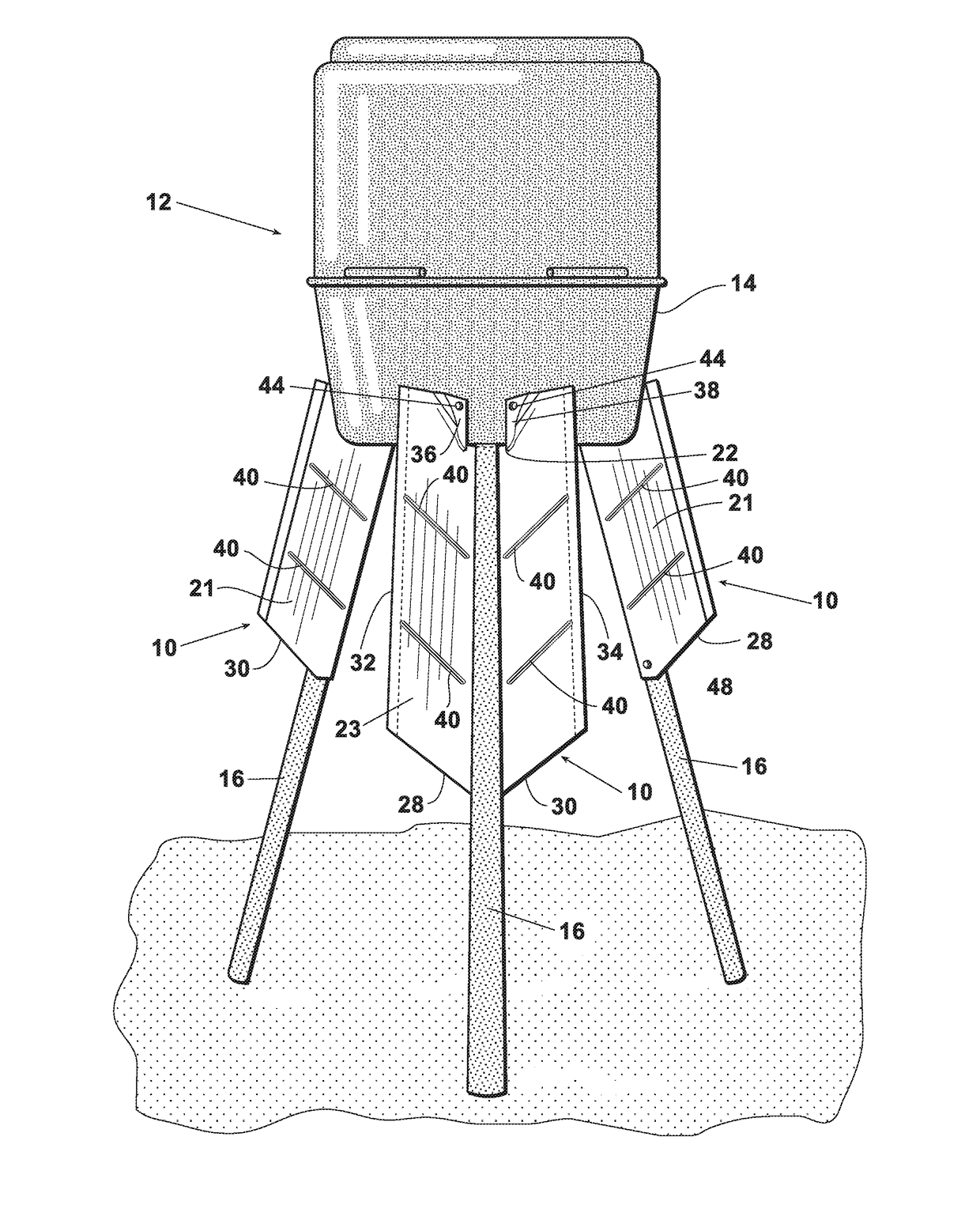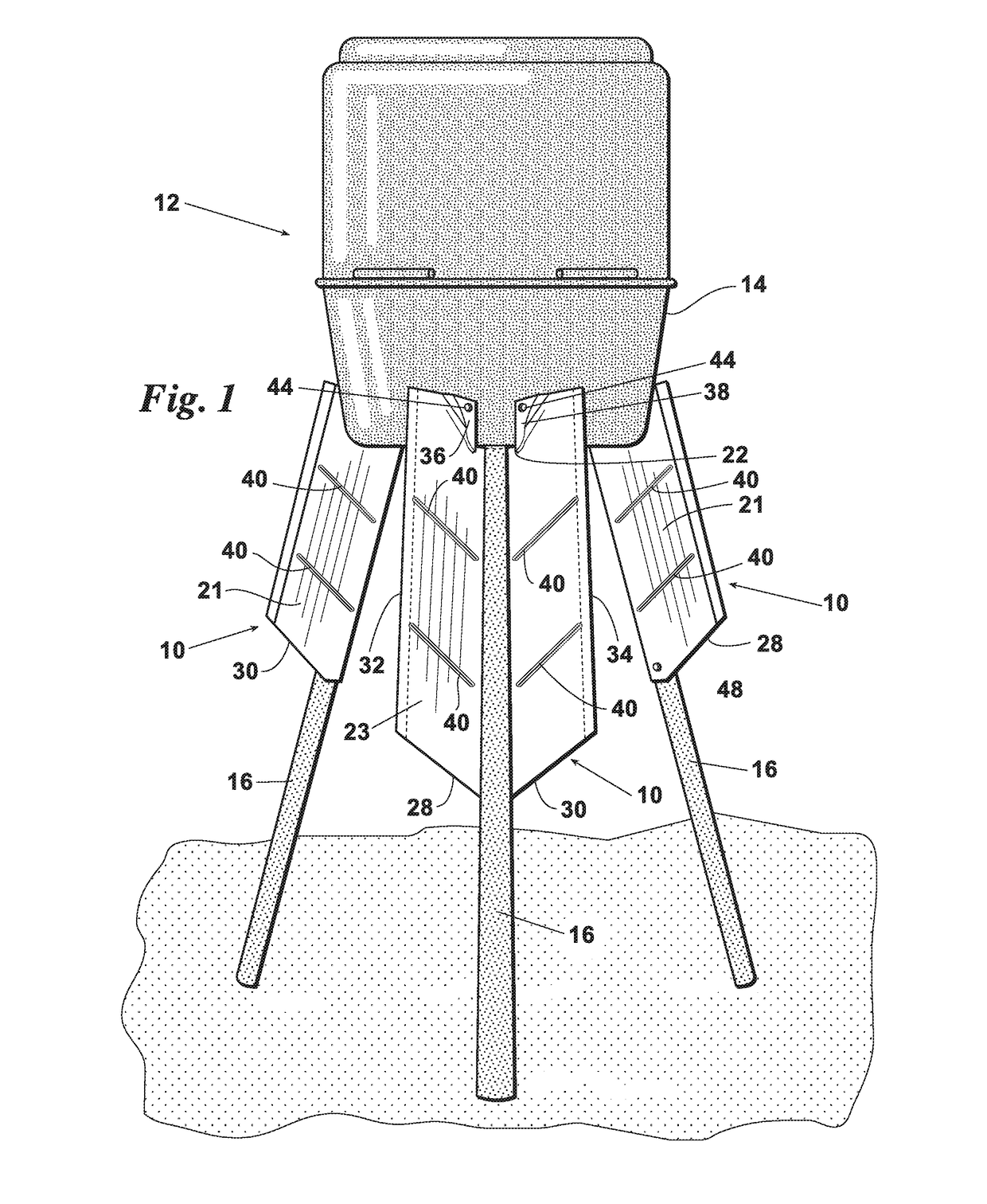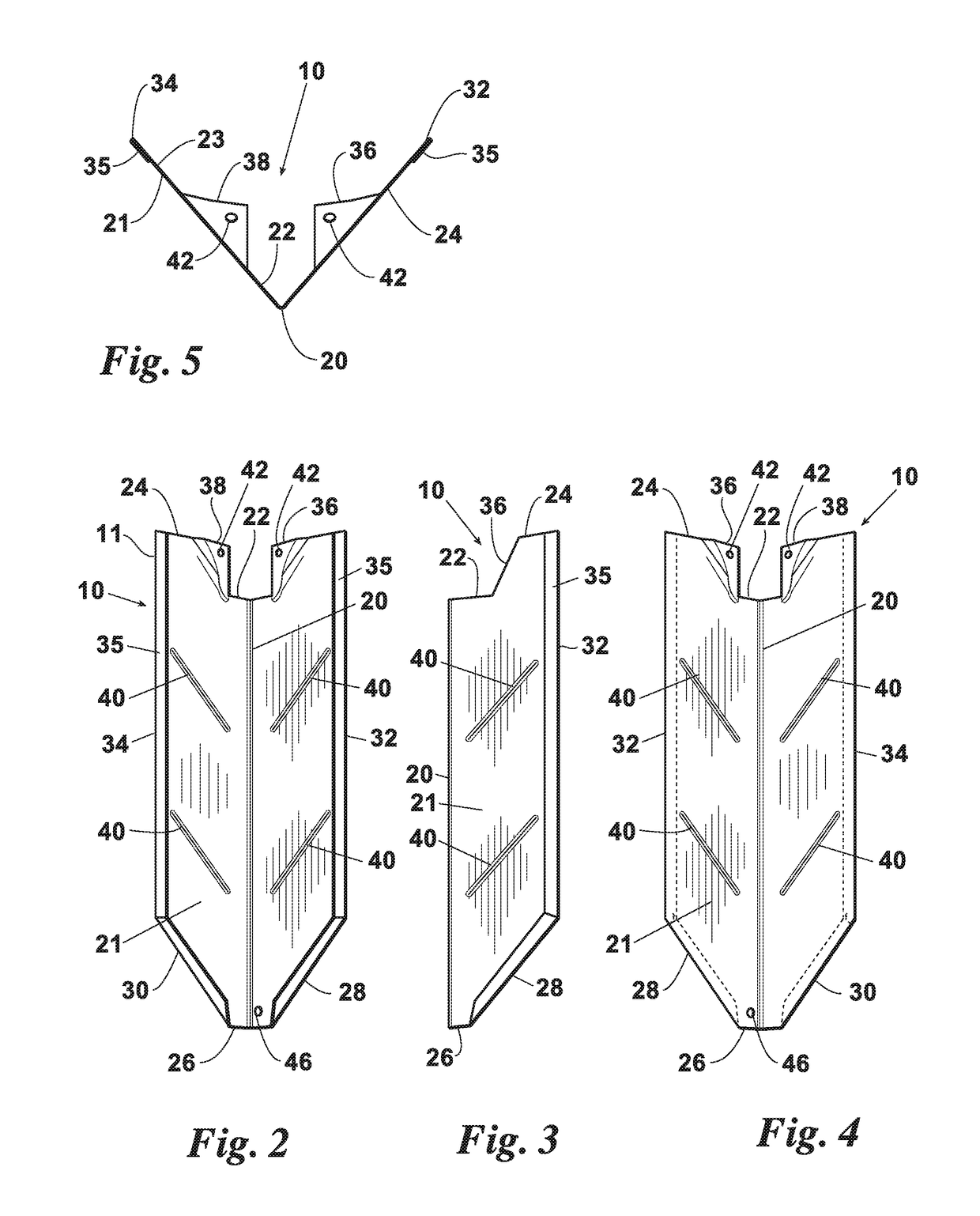Wildlife feeder varmint shield
a feeder and varmint shield technology, applied in the field of wildlife feeders, can solve the problems of increased cost for wildlife enthusiasts and costly repairs, and achieve the effect of reducing structural rigidity
- Summary
- Abstract
- Description
- Claims
- Application Information
AI Technical Summary
Benefits of technology
Problems solved by technology
Method used
Image
Examples
Embodiment Construction
[0024]With reference to the FIGS., FIG. 1 depicts an exemplary wildlife feeder 12 including a plurality of varmint shields, collectively 10 affixed thereon. It should be understood that the wildlife feeder depicted is exemplary and commercially available in various configurations. As such, the wildlife feeder itself, unless configured with the varmint shield of the present disclosure, does not form a part of the present invention. Wildlife feeder 12 includes a typically configured storage hopper 14 and a plurality of legs 16 supporting storage hopper 14. Storage hopper 14 includes an amount of bulk feed stored therein to be dispensed by feeder 12 over time. Wildlife feeder 12 further includes a motor 18 (see FIG. 6), and typically positioned below hopper 14, in feed (typically by gravity) communication which distributes feed from hopper 14 on an interval, commonly timed, basis. As such, wildlife feeders commonly include a timer in electrical communication with the motor as well as a...
PUM
 Login to View More
Login to View More Abstract
Description
Claims
Application Information
 Login to View More
Login to View More - R&D
- Intellectual Property
- Life Sciences
- Materials
- Tech Scout
- Unparalleled Data Quality
- Higher Quality Content
- 60% Fewer Hallucinations
Browse by: Latest US Patents, China's latest patents, Technical Efficacy Thesaurus, Application Domain, Technology Topic, Popular Technical Reports.
© 2025 PatSnap. All rights reserved.Legal|Privacy policy|Modern Slavery Act Transparency Statement|Sitemap|About US| Contact US: help@patsnap.com



